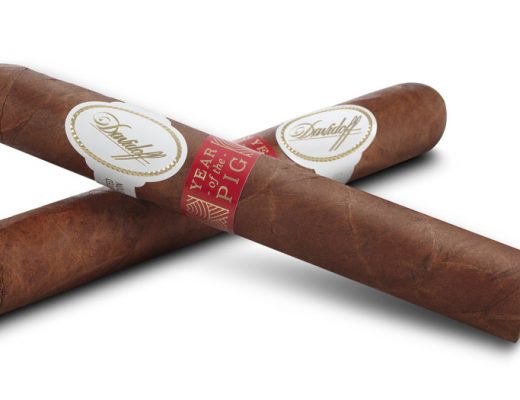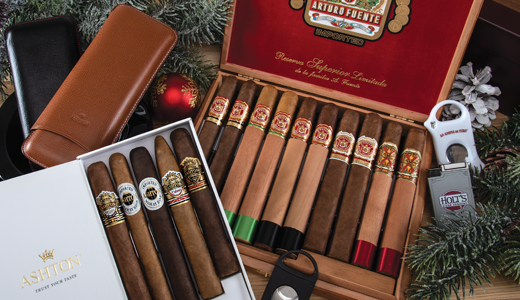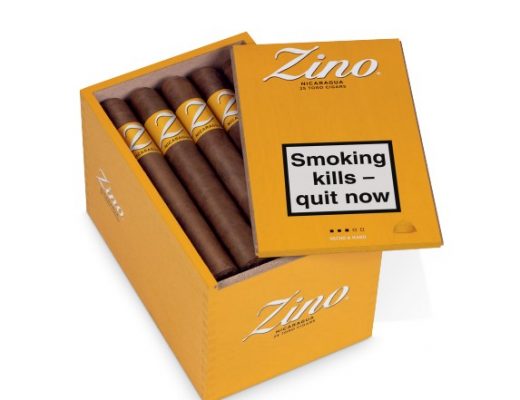Do cigars improve with age? Absolutely. How much so depends on a number of factors, principally what brand and type of cigars you’re aging to begin with. Today, a number of premium brands are rolled from select tobaccos that have been optimally aged before the finished product is shipped to the retailer.
A Few Great Brands
Ashton Cabinet, for example, is handcrafted at the world-renowned Fuente factory in the Dominican Republic from tobaccos that have been aged for a 4 to 5-year minimum. The award-winning Nicaraguan brand, Padron, is lauded for multiple cigars in its aged portfolio: Padron 1964 Anniversary is aged for a minimum of 6 years; Padron 1926 Series is aged for a minimum of 8 years; and Padron Family Reserve is handmade from tobaccos that are at least 10 years old. In most cases, with each tier of age comes an increase in price. Similar parallels can be drawn in the wine industry.
That doesn’t mean that you can’t age these celebrated smokes further. Keep in mind though, that also like wine, cigars can peak and decline after a period of time. And with that said, Holt’s Cigar Company sells all of the aforementioned brands, plus thousands of highly rated cigars that are perfect for aging.
The Aging Process
Generally speaking, cigars can be aged for many months or years, provided they are kept in the ideal storage conditions – preferably a cedar humidor or storage cabinet at 70% relative humidity and 70 degrees Fahrenheit. Humidity and temperature will always fluctuate seasonally, but major swings in storage conditions affect cigars adversely. Cigars expand and contract as temperature and humidity levels change, which can cause a cigar’s wrapper leaf to crack.
A large part of what you pay for when you buy a premium cigar is its construction. Ideal storage conditions protect the integrity of a cigar’s construction. Measure the temperature and humidity regularly with a digital hygrometer to insure your humidor stays within that 70/70 range. Also, cedar is a highly aromatic wood that reacts positively with moisture and encourages the mellowing and melding of a cigar’s many tasting notes, while conserving its original flavor.
If you prefer a more hands-off method, you can also age cigars with self-regulating humidity pouches that produce a predetermined humidity level. Simply replace the pouch(es) when the humidity has been exhausted. Humidity pouches will even work in a Ziplock freezer bag with a strong seal if you haven’t invested in a humidor yet. You may not get the added nuances of flavor that a cedar humidor can lend to a cigar over time, but you’ll still perceive a noticeable difference in the cigar’s taste.
Rotate Your Cigars
Another key to aging cigars correctly, especially in a humidor, is to rotate them. Make sure the same cigars aren’t always closest to the humidification source. Every couple of weeks simply shift the top layer to the bottom and vice versa. It’s also a good idea to make sure your humidor isn’t totally jam-packed. Leaving a little extra space inside the box allows the air and the humidity to circulate more freely.
Do “Bad” Cigars Get Better with Age?
If you ever buy a cigar (or box of cigars) that tastes bitter or furnishes unwanted traces of ammonia – which is part of the natural fermentation process that premium tobaccos undergo – aging will almost certainly deliver a beneficial end result. That doesn’t necessarily mean that you can always make a “bad” cigar taste “good.” However, you can often make a “good” cigar taste “great.”
How Long Should I Age My Cigars?
Aging cigars can be a bit like rolling the dice. We recommend buying a box, or at least a handful of cigars, from a brand you already know you like. Smoke one right out of the box or off the store shelf. Pay close attention to its flavor transitions, burn, and finish. It may be useful to take a few notes for reference. After you are assured that the quality of cigar meets your satisfaction, place the remaining cigars in your humidor and allow them to rest.
After about 6 weeks, take a cigar out from the same batch and smoke it. As cigars rest, the oils from the binder, filler, and wrapper leaf meld with one another and deliver a more uniform profile. Also, as time passes, any residual bitterness or acidity that may be present in a younger cigar will dissipate. Smoke another cigar after 12 weeks and continue to indulge at roughly 4 or 6-week intervals until your cigars have been resting for a year or two, or more.
I have personally aged a number of blends from different brands over the years. When La Flor Dominicana first expanded its Double Ligero series, I became a fan of the potent spices and dense texture the heavy, Ligero-laden smokes produced. I stuck a few dozen away, smoking them from time to time.
As I revisited these feisty smokes while they aged past the 5th year, much of their intensity had waned – and not necessarily in a good way. The hearty, beefy spices I was accustomed to no longer registered and the cigars displayed a less complex, somewhat flat flavor profile. Upon reflection, this was a blend best enjoyed within a year or two of rest at most.
Smoking Old Cigars
At the other end of the spectrum, I recently had the pleasure of enjoying a handful of Ashton VSG (Virgin Sun Grown) shapes from the blend’s inaugural year of release – 1998 – making them 20 years old. They had been resting at the Fuente factory for the past two decades under the watchful eye of legendary cigar-maker Carlito Fuente. I have always been a big fan of Ashton VSG, with its succulent Ecuador Sumatra wrapper and a premium core of select Dominican binder and filler tobaccos.
Before I lit up one of these supremely old cigars, I wondered if much of the original VSG flavor would be preserved, or if it had dissipated. I have to say, the results were astounding. Not only did the renowned blend display familiar VSG tasting notes of cedar, raisins, and black pepper, but everything about the profile was ultra-refined. The cigar was so impeccably smooth and disarming, I can easily put it in the top five best cigars I have ever had the privilege to smoke. It remained silky, approachable, and rich throughout a lingering finish.
Hands down, Ashton VSG is a cigar I would not hesitate to purchase in quantity. Not only does the blend taste fantastic right out of the box, but after 20 years, it’s tough to beat by any cigar lover’s standards.
I have also, on a small number of occasions, indulged in a pre-embargo Cuban or two. Luckily, they were provided gratis courtesy of outside sources. And, I can honestly say, after more than 50 years of rest, they were entirely unremarkable, if not un-smokable. Ultimately, I found them flat, papery and bitter. While I would be curious to try a pre-embargo Cuban one day again, perhaps in another brand or blend, I would be skeptical of purchasing one based on my previous experiences, as I know they are fairly expensive.
The Best Cigar-Makers Know the Value of Age
The best cigar-makers have become exceptionally sophisticated over the past 30 years when it comes to growing, fermenting, and blending tobaccos that reveal deeply refined flavors by the time they reach the retail environment. Many of the best-tasting cigars of today will exhibit marvelous complexity tomorrow.
Begin a cigar-aging odyssey with your own favorites and plan to celebrate life’s most momentous future occasions with cigars that you love now and can set aside for later.
Surgeon General Warning: Cigar Smoking Can Cause Cancers of the Mouth And Throat, Even If You Do Not Inhale.





